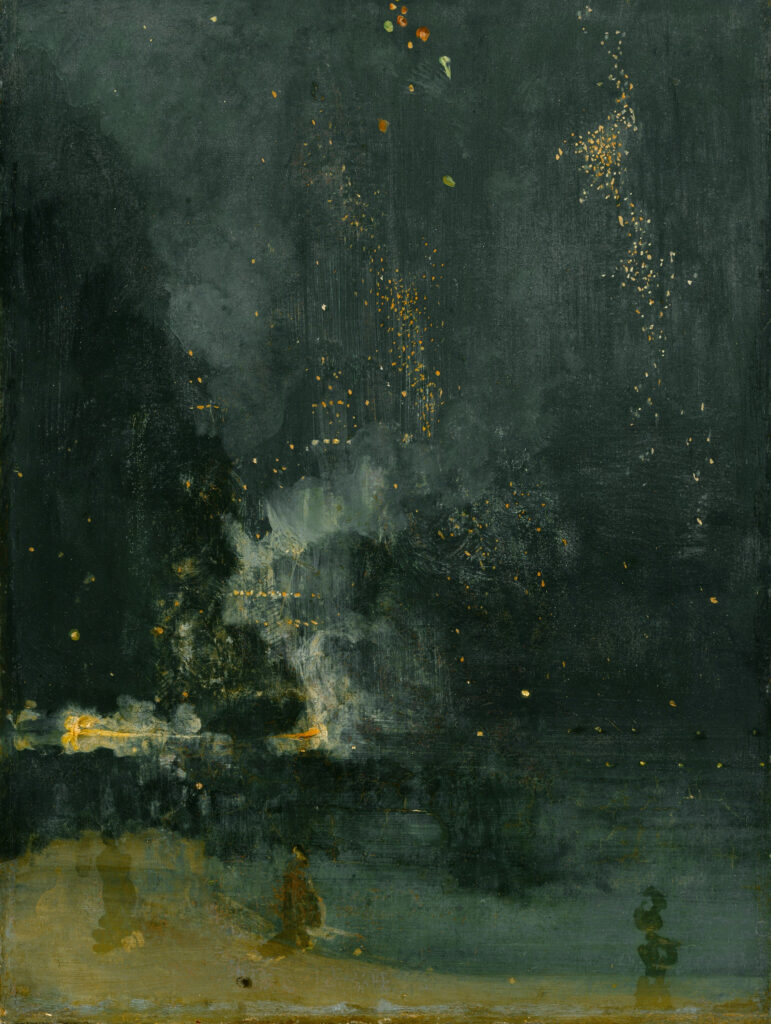For James Whistler, the revolution began in 1875—with the creation of Nocturne in Black and Gold: The Falling Rocket. Whistler had already been painting scenes of London at night for four years. But this scene was different. The others generally evoked the tranquility of the quiescent Thames shore bathed in gentle moonlight. But in this painting Whistler shunned moonlight altogether and instead portrayed a local pleasure-garden in pitch-black darkness, punctuated but not illuminated by the climactic moment of a fireworks show. As an attempt to depict anything, Whistler knew that Falling Rocket was a failure. As I write in the book,
…anyone hoping to see that view in his painting would be seriously disappointed. Despite the incendiary brilliance, sheer darkness overwhelms and reduces both nature and humanity to near nothingness. Three forms in the foreground are brushed on with the merest touches of thin and opaque paint so that they melt into their surroundings. It is impossible to tell if the space in front of them is a pool or a sward: a pool, reflections suggest, but a sward according to Victorian maps of Cremorne. The fireworks gallery at the center would disappear entirely into the night save for the tiny spots of illumination on its platforms and minarets. A tree to the left is only visible by its utter blackness, given definition by a greyer smoke behind it. Only the fireworks themselves provide strong evidence of life, and Whistler painted these with exquisite skill: choosing his brushes and colors carefully and arranging each tiny spot on canvas to arrest and represent accurately the distance between rockets, their falling motion, their kaleidoscopic brilliance. His arrangement here is as carefully thought-out and executed as his arrangement of his mother’s portrait. But in Nocturne in Black and Gold: The Falling Rocket, Whistler pursued darkness to a revolutionary point he had not reached before and would never as successfully reach again. With this painting, he declared war upon realism, upon the Royal Academy, upon Victorian convention. He had reached his subversive limit.
Not surprisingly, the critical reaction to Falling Rocket when Whistler displayed it soon after its creation was largely negative. But Whistler was used to the bewilderment of these critics, and let their attacks pass. When, however, two years later John Ruskin—by far England’s most influential art critic—first saw the painting, hated it, and published a scathing assessment of it, Whistler was compelled to sue him in order to defend his revolutionary aesthetic vision. This let to the celebrated case of Whistler v. Ruskin: the first skirmish in a lifelong battle between the painter and the critic for the future of modern art.

